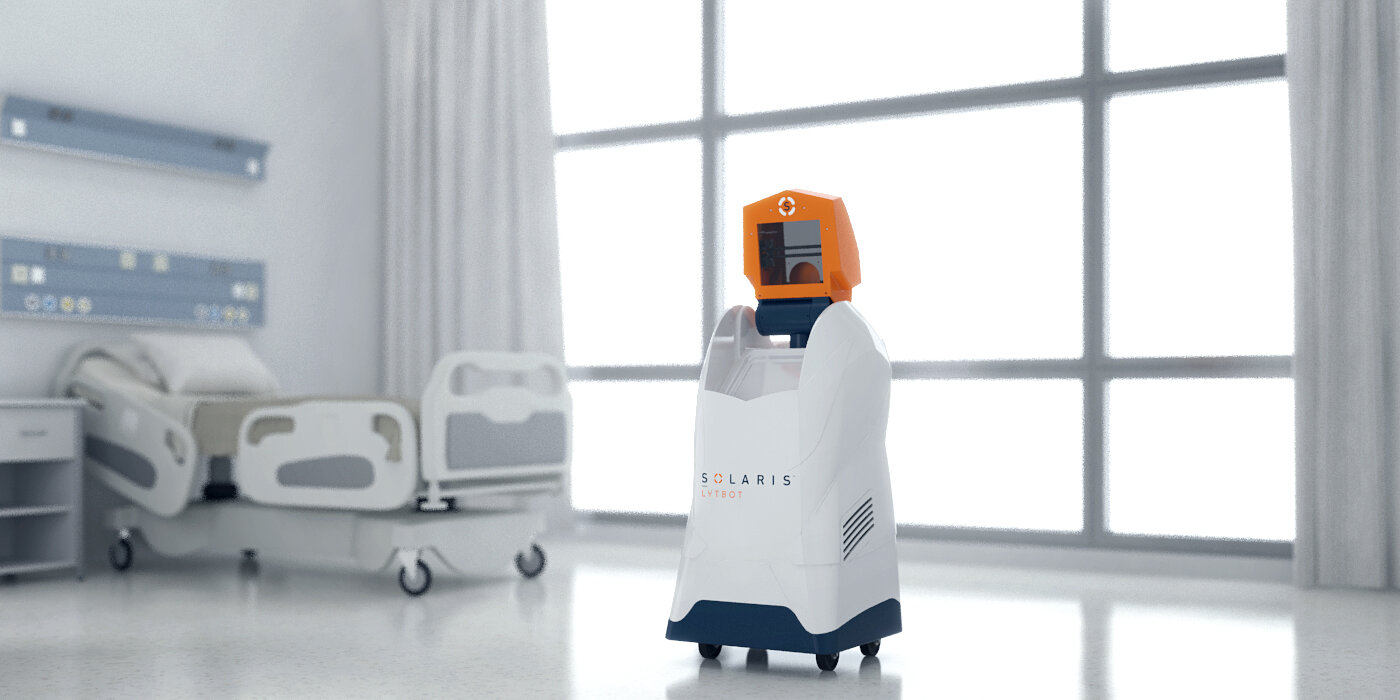
Solaris Lytbot Pulsed UV-C Disinfection System
An innovative and effective weapon against pathogens
Get to know Solaris UV-C Lytbot
3, 5, 10 minute Cycles - Simple cycles are 25-40% faster than competitors
Maxpulse Technology - Higher flash rate = increased disinfection efficacy against a variety of pathogens
Targeted Disinfection - Engineered reflector amplifies energy to high touch surfaces where 80-90% of pathogens hide
Lytbot Works Differently than Mercury UV Systems
UVC damages DNA, creates thymine dimers, eliminating pathogen ability to perform its cellular function
Pulsed UV Disintegrator – full spectrum pulsed UV light sends billions of high energy photons causing cells to overheat and rupture
Pulsed Xenon UVC Lytbot Advantages
No mercury. no dangerous microwaves
Hands-free, chemical-free
Easily maneuvered by one person
Increased efficiency, lower HAI rates
Cost efficient solution, rental and purchase options
Manual disinfection isn’t cutting it
When used as the only method of disinfection, manual cleaning clearly isn’t cutting it. UV-C devices complement manual disinfection by finishing the job effectively and efficiently.'
Up to 78% of hospital surfaces still harbor harmful pathogens even after manual disinfection
1 in 25 hospital patients will acquire an HAI during their hospital stay
Of those who acquire an HAI, 1 in 9 patients will unfortunately die (CDC)
Lytbot versus the competition
| System | Pathogen | Distance | Cycle Time | Reduction % |
|---|---|---|---|---|
| Mercury UV-C | C. Diff | 4 feet | 5 minutes | 40% |
| Lytbot | C. Diff | 5 feet | 5 minutes | 98.4% |
| Lytbot | MRSA | 6 feet | 2.6 minutes | 100% |
Many companies currently offer surface disinfection solutions made with mercury bulbs to generate UV-C light
Bulbs contain mercury which is Hazardous and Toxic
If a bulb breaks, the hazards associated with its absorption include eye and skin burns, blurred or double vision, headaches, and nausea

